More and more, oil and gas projects are resembling a mid-2000s science fiction movie with questionable CGI: robots, computer screens with bright colors and loads of data, world domination—well, maybe not that one. But this isn’t a big budget Hollywood production. It’s real and it is now the norm.
Wood Plc is one of the companies embracing digitalization and leading the charge. Though it’s not a robotics company, the engineering and consulting company employs robots and digital software to support its clients’ day-to-day operations. It partners with companies like Xplorobot to assist clients with emissions reduction.
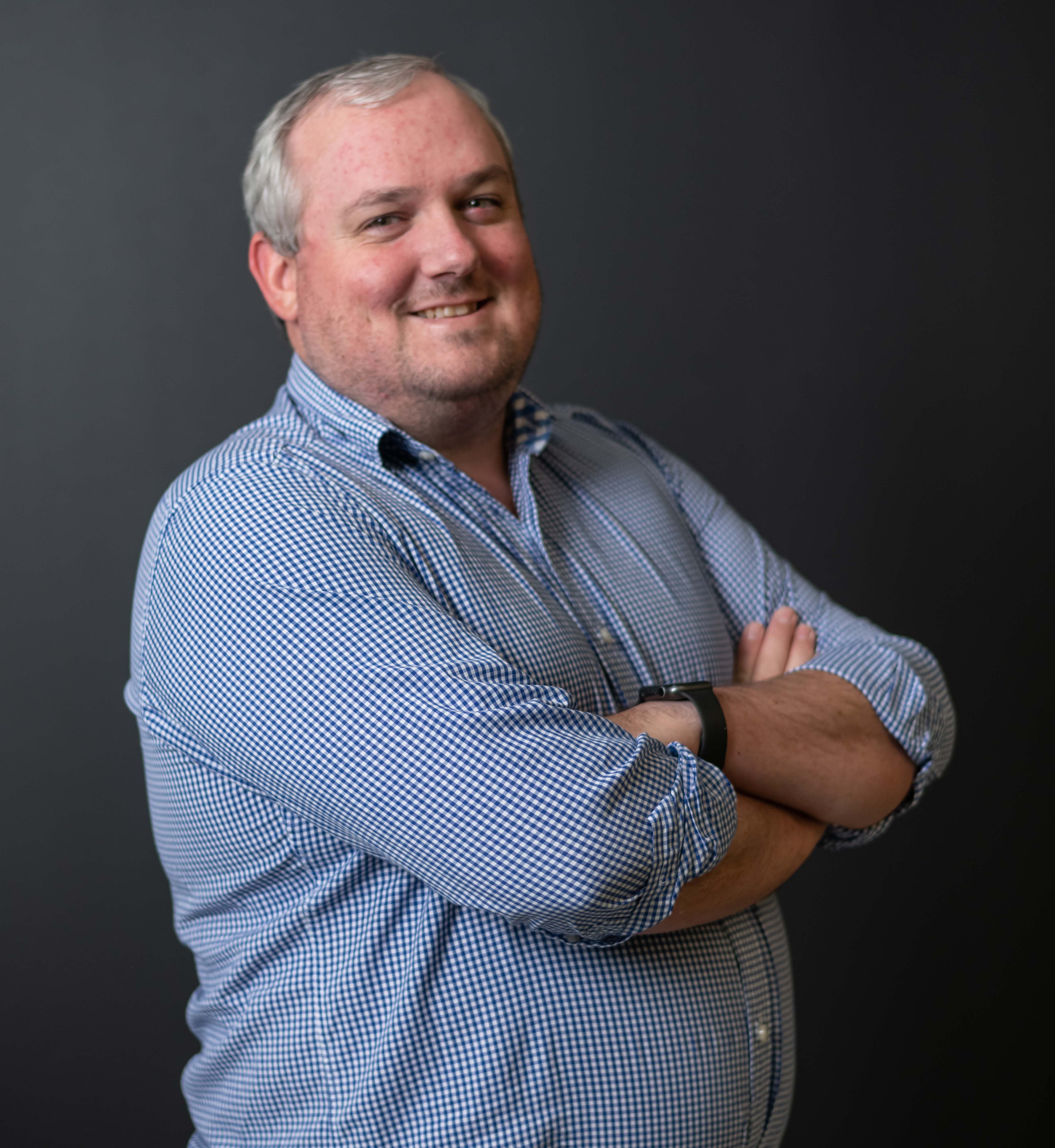
—Stephen Kelman, Operations Director, Wood Plc. (Source: Wood Plc)
“What separates us from anybody else is the technology that we’re using and the ability to localize and quantify the emissions,” Stephen Kelman, operations director at Wood, told Hart Energy. “There’s no other technology that we have seen or used in the market that has the ability to hone in to a specific flange or valve and say, ‘That’s the flange that’s leaking, and that’s the quantity of methane.’”
Wood’s emissions-detecting technology, Iris Edge, is deployed using Xplorobot’s handheld sensors and drones, and has undergone trials using robots. Its operation is similar to others on the market: the maintenance team maps out the route the robot will take through the facility and the robot then follows that path, capturing emissions and visual data, as well as thermal, acoustic and vibration data. Once collected, the robot returns home to its “doghouse” or home location and then uploads all images and data it has captured to the company’s database. Once the data has been uploaded, a color-coded 3D model is produced with all the data gathered overlaid on top of the model to enable localization and quantification of the emissions.
When combined with either handheld or robotic data-gathering products, Iris Edge is able to digitally scan infrastructure, provide immediate alerts on fugitive emissions down to the flange level and bring the asset from detection to repair within 24 hours, the company says. It also integrates into existing operations, which can save on hardware, labor costs and overall inspection costs.
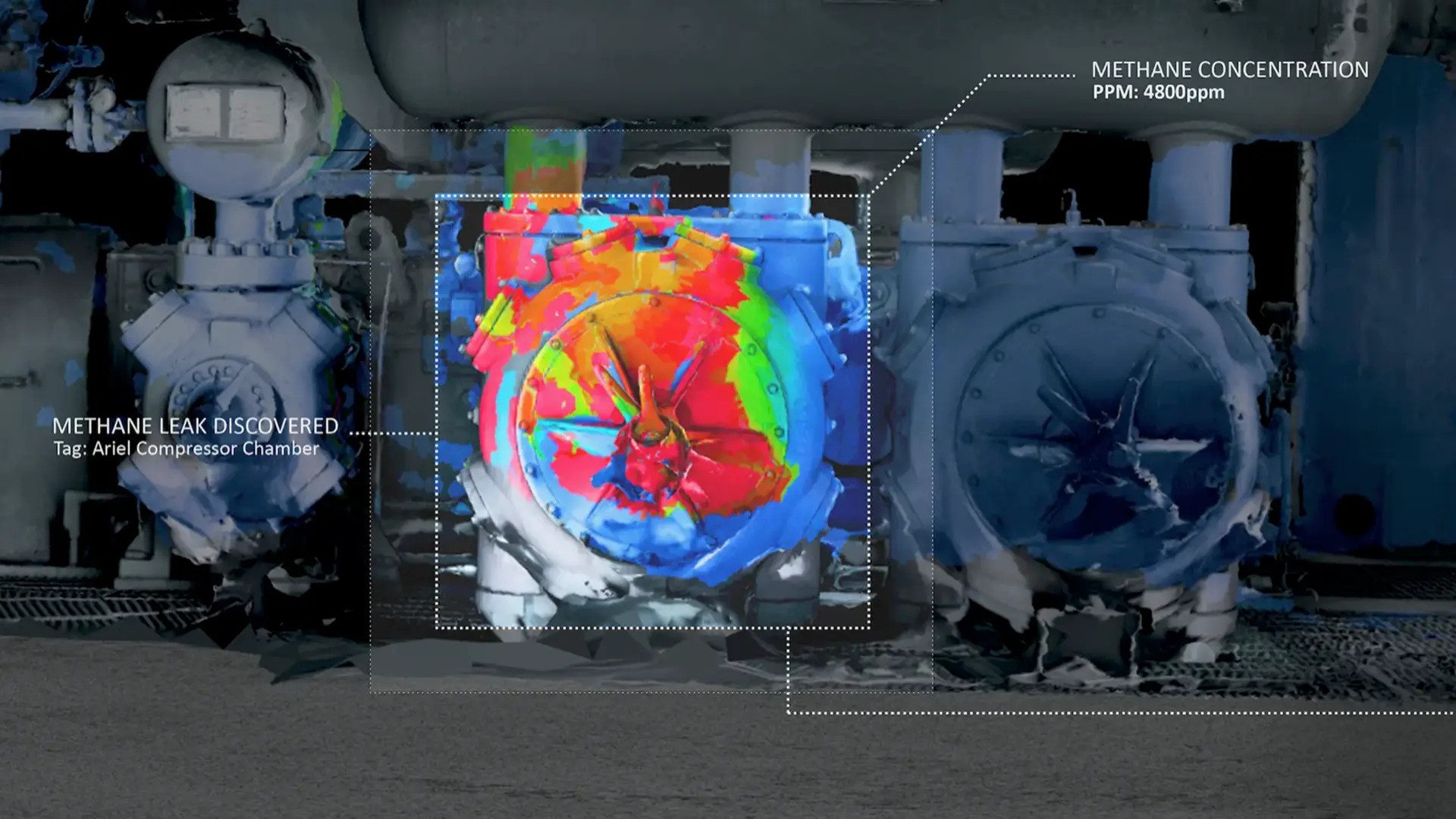
Watching in real-time
Iris Edge is also able to feed data into ENVision, which is software proprietary to Wood. “If our client has ENVision deployed, we can also use the [Iris] data to support that,” Kelman said. “So, we have the ability to bring the two together.”
Backed by the Azure Cloud platform, ENVision software helps manage emissions data, streamline and automate data points for a clear and accurate emissions view and provide real-time insights into emissions and carbon releases.
“By having access to that data, in combination with your external data, you find out what you need to be doing, how you can get there, how you can build a roadmap, etc.,” he said. “It’s automated so you’ll get real-time event detection notifications … it will enable you to reduce your reporting man hours by up to 80% because a lot of it’s done in the platform. It gives you more accurate results on your emissions [calculations] and reduces your cost to compliance.”
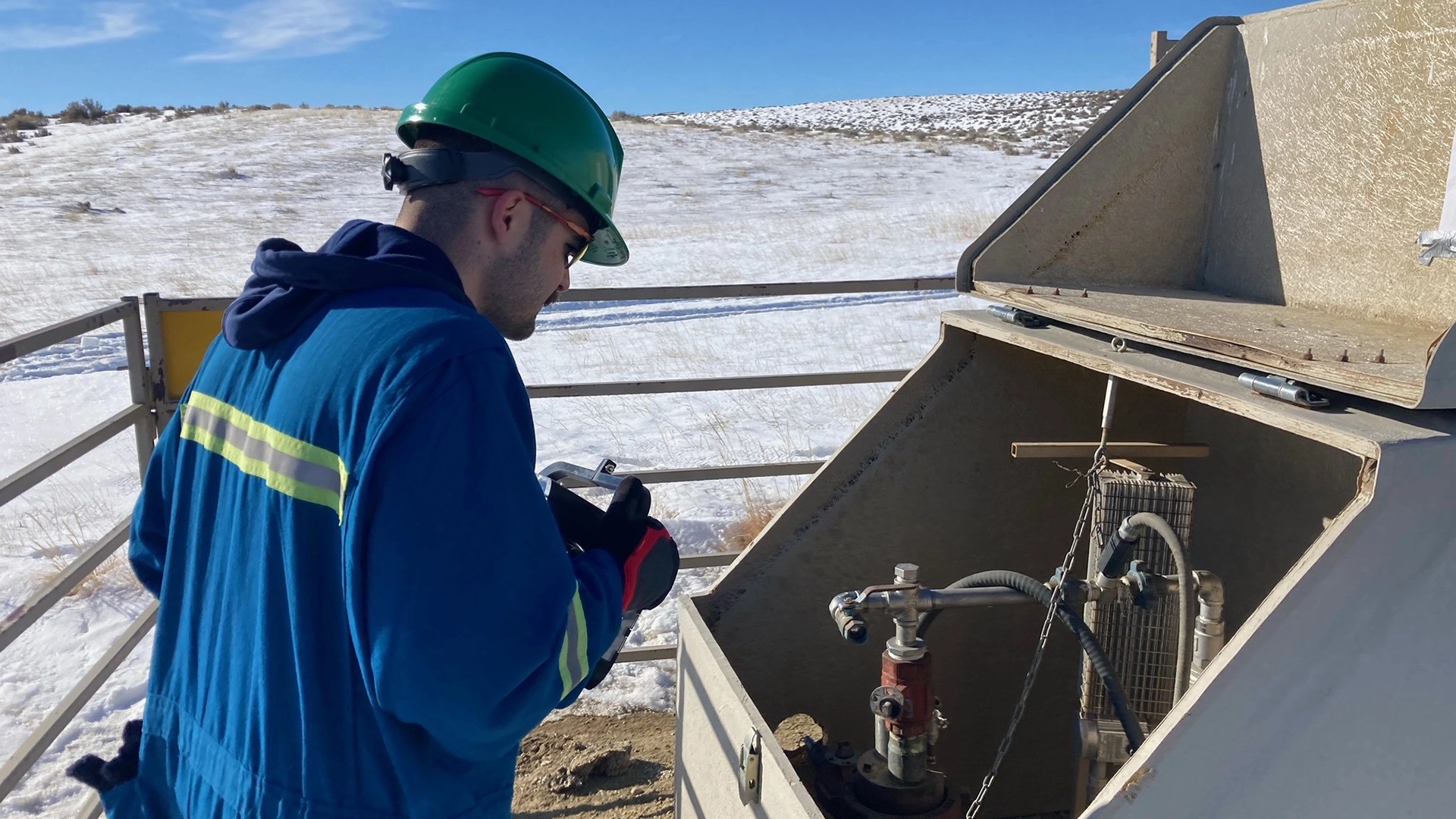
Wood’s methane detection tools have a good track record. In 2022, Wood and Xplorobot teamed up to conduct a pilot study for Wyoming-based Carbon Creek Energy using the Iris Edge software. That study reviewed 4,200 of Carbon Creek’s natural gas wells. Leaks were discovered within the first 10 minutes of the operations and fixed the next day. The Iris Edge technology was also able to certify the cleanliness of Carbon Creek’s natural gas to make sure it was responsibly sourced, which in turn helped to track their transition to net zero.
Another study for a Canadian energy company using both handheld and robot hardware options identified a previously undetected anomaly and its exact location, allowing the client’s onsite team to repair it within 24 hours. Before Iris Edge, operators used optical gas imaging (OGI) cameras, which located the leaks but could not quantify the exact amount of methane escaping. Iris Edge uses tunable diode laser absorption spectroscopy (TDLAS) to quantify the amount of methane to parts per million per meter.
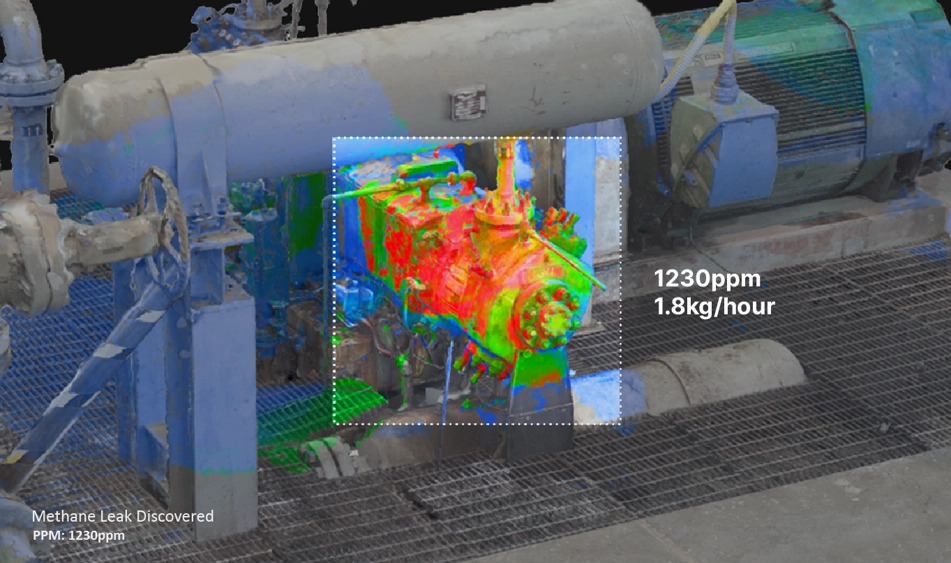
Looking ahead
Concerns about costs and logistics can oftentimes dissuade operators from implementing robots in their operations, especially offshore, Kelman said. Wood’s advantage is that its technology offerings are cheaper, particularly those involving handheld devices that can be operated by workers who are not certified technicians.
He also said operators are drawn to Wood’s technology because the system not only detects anomalies within assets, but allows the operator to better understand the emissions profile, which helps in reaching reductions goals.
It can also help clients save money by avoid penalties and monetizing operations via methane performance credits.
“The big piece for us is just focusing on helping our clients understand their emissions profile and then really helping them to document that and develop a longer-term strategy around how they want to manage their emissions,” Kelman said. “When the penalties from the EPA come into force this year, they have something that they can base their data off of so they can report and have data to back it up.”
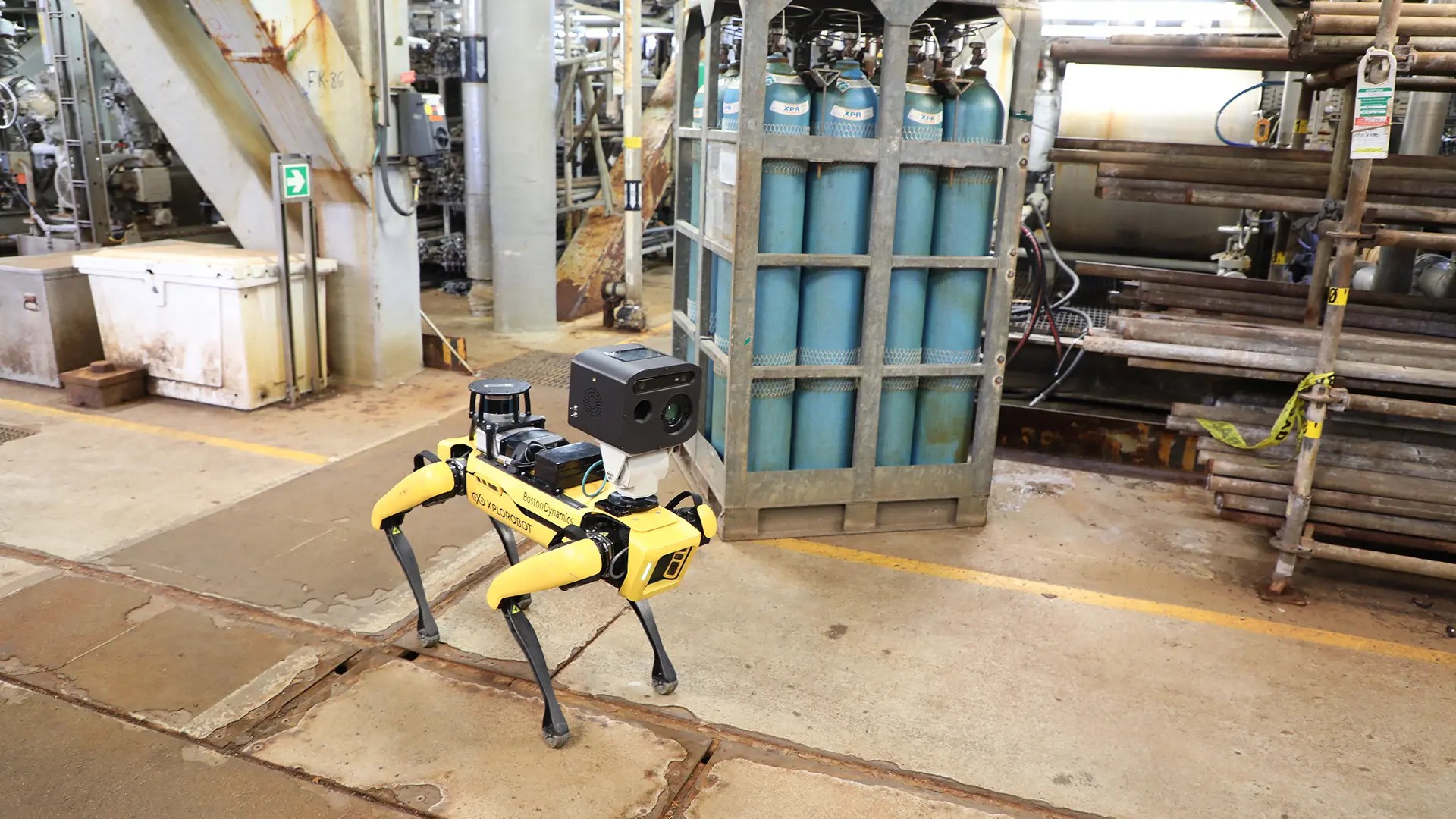
Recommended Reading
Hibernia IV Joins Dawson Dean Wildcatting Alongside EOG, SM, Birch
2025-01-30 - Hibernia IV is among a handful of wildcatters—including EOG Resources, SM Energy and Birch Resources—exploring the Dean sandstone near the Dawson-Martin county line, state records show.
Ring May Drill—or Sell—Barnett, Devonian Assets in Eastern Permian
2025-03-07 - Ring Energy could look to drill—or sell—Barnett and Devonian horizontal locations on the eastern side of the Permian’s Central Basin Platform. Major E&Ps are testing and tinkering on Barnett well designs nearby.
EOG Ramps Gassy Dorado, Oily Utica, Slows Delaware, Eagle Ford D&C
2025-03-16 - EOG Resources will scale back on Delaware Basin and Eagle Ford drilling and completions in 2025.
Formentera Joins EOG in Wildcatting South Texas’ Oily Pearsall Pay
2025-01-22 - Known in the past as a “heartbreak shale,” Formentera Partners is counting on bigger completions and longer laterals to crack the Pearsall code, Managing Partner Bryan Sheffield said. EOG Resources is also exploring the shale.
Talos Energy’s Katmai West #2 Well Hits Oil, Gas Pay in GoM
2025-01-15 - Combined with the Katmai West #1 well, the Katmai West #2 well has nearly doubled the Katamai West Field’s proved EUR to approximately 50 MMboe gross, Talos Energy said.
Comments
Add new comment
This conversation is moderated according to Hart Energy community rules. Please read the rules before joining the discussion. If you’re experiencing any technical problems, please contact our customer care team.





